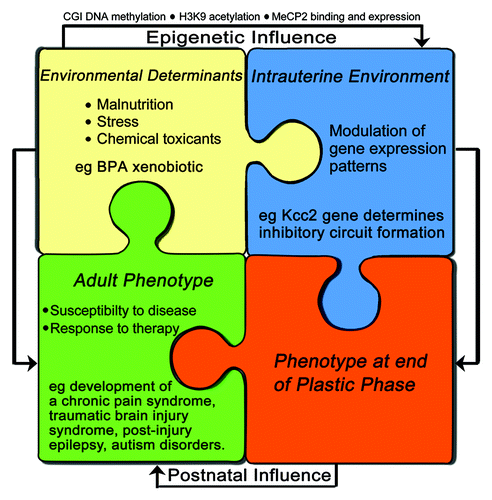Figures & data
Figure 1. Exposure to BPA may disrupt development of the central nervous system by slowing down the removal of chloride from neurons. As an organism matures and the brain develops, chloride levels inside neurons decrease. However, when exposed to BPA, the chloride is removed more slowly from neurons. Female neurons appear to be more susceptible to the effects of BPA. In regards to the abscissa (left-hand), note a relevant ontological difference between rodents and humans: the chloride shift that coincides with the upregulation of KCC2/Kcc2 gene expression occurs between developmental stages E17 and P20 in rat neurons.Citation11,Citation62 In humans, KCC2 levels start increasing by the second trimester and reaches a peak at birth.Citation15,Citation22,Citation63

Figure 2. A model for neurodevelopmental disorders and susceptibility to suffer from maladaptive neural plasticity later in life: perinatal epigenetic changes of key genes for nervous system functioning, such as Kcc2, plasticity and repair mechanisms counteract. The degree and effectiveness of these regulatory (i.e., damage-limiting) mechanisms is further affected by how much they are affected by BPA exposure. In case these mechanisms are severely impaired themselves, then epigenetic dysregulation is more likely to lead to manifest neurodevelopmental disorders. In case counter-regulatory repair mechanisms are rather effective, it can lead to complete restitution, or it can lead to normal development, but a predisposition to show maladaptive changes in response to stress/ injury/ hormonal changes later in life. For example, development of a chronic pain syndrome, a post-traumatic brain injury syndrome, post-injury epilepsy and autism disorders.
